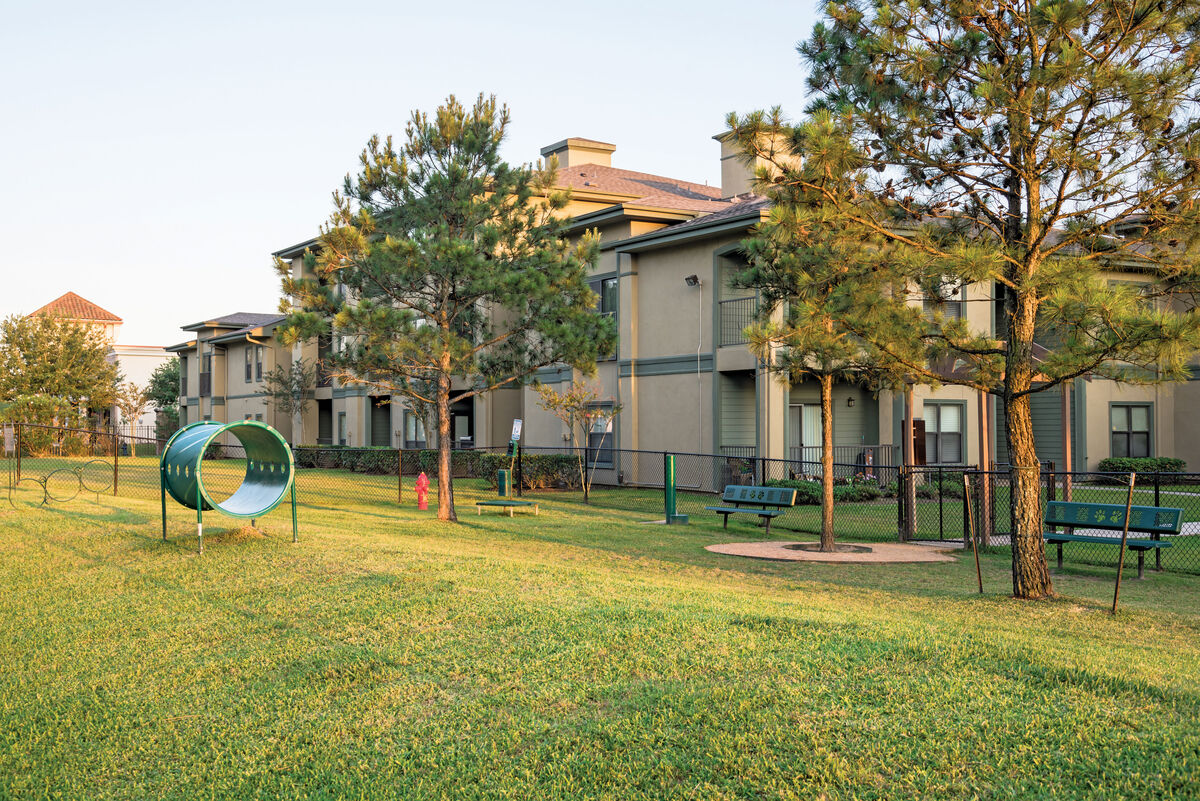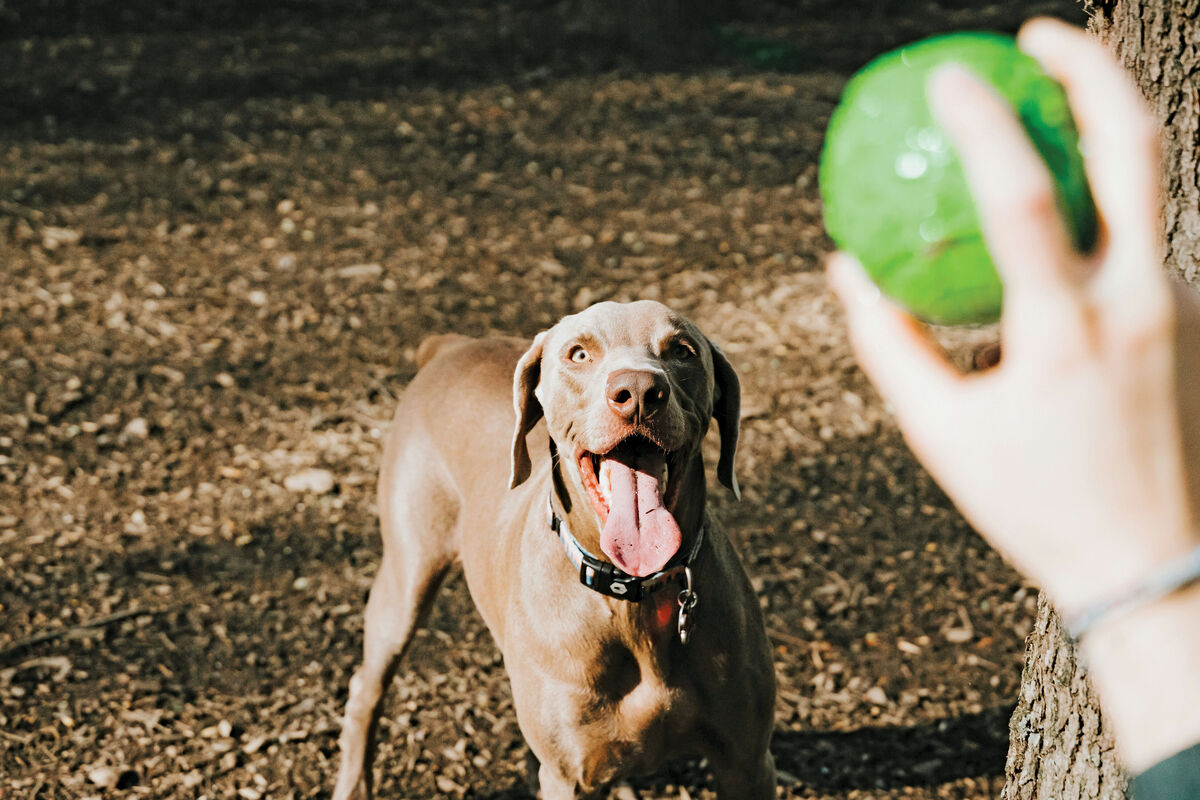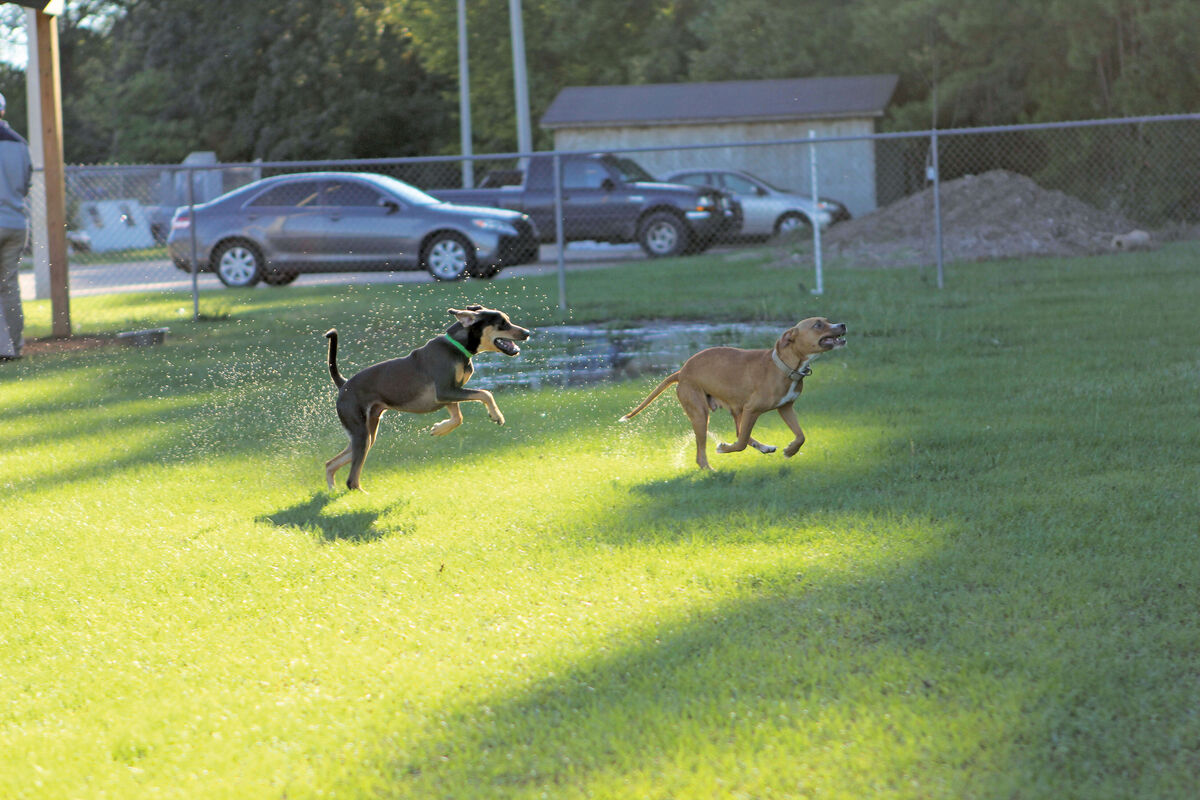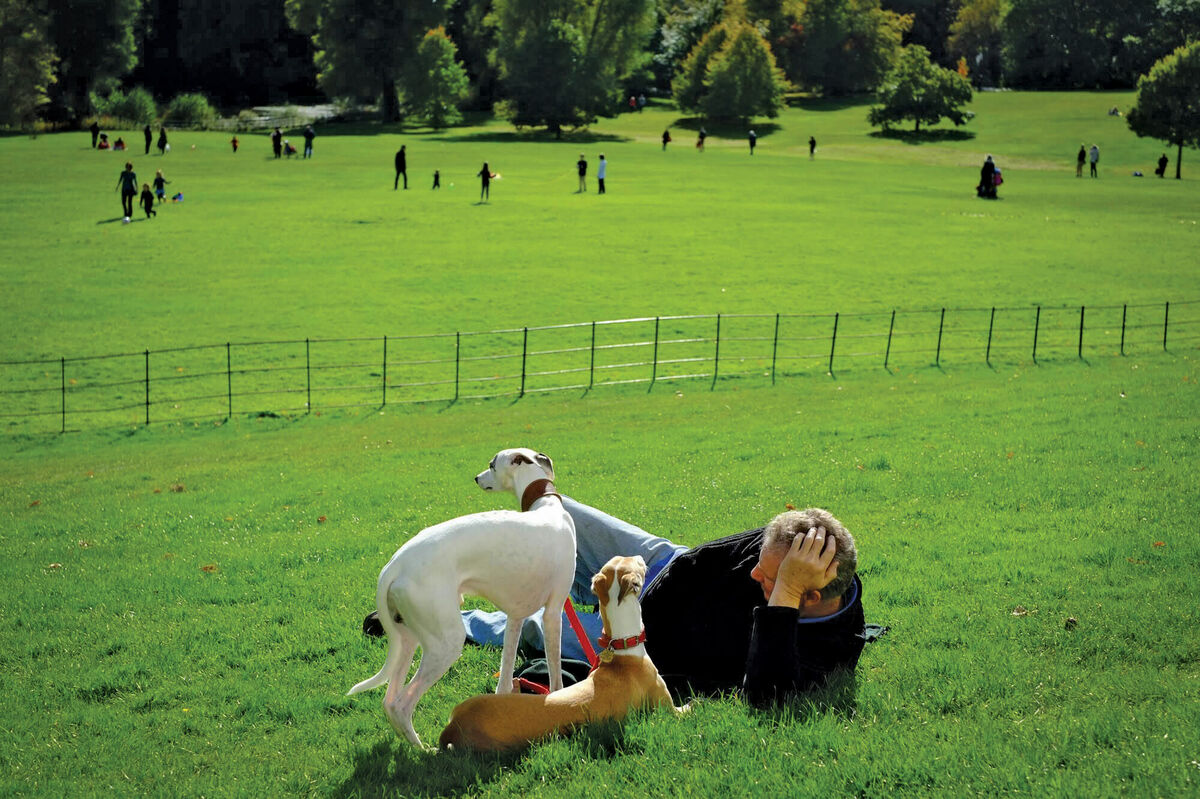Photo credit Adobe Stock - trongnguyen
Planning a dog park? Start here
By Mary Helen Sprecher
Several decades ago, the gotta-have amenity for housing developments, community associations and apartment and condominium complexes was the swimming pool.
Fast forward to today, and priorities have shifted. Now, dog parks are in demand. According to the Trust for Public Land, since 2009 there was a whopping 40 percent increase in the number of dog parks being built nationwide.
Just as with sports fields, dog park construction has changed in the intervening years, and nowhere has it changed more than in the surfaces used.
If constructing a dog park with a natural grass surface, discuss the varieties that work best given the geographic area, soil type, climate and the amount of use expected. In general, the more resilient and durable the surface, the better off you’re going to be. Bermudagrass, Kentucky bluegrass, Zoysia and fescue grass are all options because of their resilience to foot traffic. If the park is large enough, the grass may stay in good condition despite regular use; smaller parks, however, may need to be rested in order to let the surface rebound.
Photo by Tatiana Rodriguez on Unsplash
According to Lee Narozanick of American Athletic Track and Turf, although regular maintenance of the surface, including mowing (2- to 4-inch cut height), will keep it in good repair, “the grass should not be cut too short because it gets trampled and dies and then the area becomes muddy. Letting the grass grow longer than you are accustomed to, at least in terms of a sports field, will actually allow it to stand up to everyday activity much better.”
Additional landscaping within a dog park will depend upon the size of the park and the amount of usage. We’re seeing some with trails — generally covered with mulch or crusher run. Higher grasses — such as native grasses and prairie grasses — have a nice aesthetic if they are placed on the outskirts of the park, but high grasses where dogs will constantly run and roll can carry a risk for ticks.
Although natural grass has been the norm, there are synthetic turf systems available that are designed specifically for dog park use, but there are important considerations associated with using synthetic.
“While all infills can be deemed ‘sterile’ by nature, typical sand/rubber infills aren’t ideal because of the frequent bathroom breaks by animals, which means the cleanup would be messy,” said Chris Franks of SCG Fields.
In general, the synthetic systems designed for use in dog parks are non-infill, high density and short pile; and they are generally resistant to bacteria and odors. According to Franks, dog parks with a synthetic surface should have a drainage base and a below-ground way to remove water from the surface (3 to 4 inches of stone over filter fabric over a compacted subgrade). This not only keeps the surface dry from rain but, more importantly, allows for clean up by washing and/or scrubbing with a non-abrasive cleaner. Most dog parks also include water features and/or water fountains, so drainage could be an overlooked but very important part of the construction process, Franks added.
Photo by Rui Alves on Unsplash
Part of the regular maintenance of synthetic turf surfaces is hose-cleaning them to rinse away urine and other excrement. This will be particularly important in areas where there is little or no natural rainfall. Note that synthetic turf will require daily maintenance, or even twice daily in places where there are lots of dogs, as dogs do carry illnesses.
Other options used in dog park surfacing include the following:
-
Skinned surfaces: The advantage is that there is no mowing involved; the disadvantage is that the park will be muddy and slippery after a rain.
-
Skinned surfaces covered with mulch, crusher run or other materials: These are fairly inexpensive options that can be changed out or replenished each year (or more often, depending upon the need).
Regular maintenance is key to keeping any surface in shape, and that includes the level of care being exercised by pet owners. If users regularly clean up after their dogs, it goes a long way toward making the surroundings pleasant.
The height of fencing around dog parks is a subject of debate; however, higher fencing (at least five feet at the top rail and often even higher) is generally preferred. Footings should be buried at least one foot down, and fence panels should be buried to a depth of six inches at all locations, except at access points, in order to deter dogs from trying to dig their way out.
Photo by Judy Beth on Unsplash
And just as with sports facilities, it is amenities that will make a dog park stand out:
-
Access points should be double gated to keep dogs from escaping while being brought in and out of the enclosure.
-
Dividing the park into two sections (with a fence running between) can allow for one area to be used by large and giant breeds, and the other by small to medium size dogs. This is actually recognized as one of the most important safety measures.
-
Waste disposal bags and an adequate number of trash cans should be provided. Many bag dispensers and waste containers are on the same post assembly; these are then permanently installed at various points throughout the park, making for easy use and disposal.
-
Adequate parking for all users will be essential to the success of the dog park; if not enough parking spaces are available, users may wind up parking illegally (leading to ticketing and complaints) and/or parking in nearby neighborhoods — much to residents’ annoyance. Keep in mind that there will be times of enormous demand, such as after work hours on weekday evenings, and on weekends during the day.
-
Dog-park-specific water fountains are another user-friendly fixture; such fountains have an upper bowl or faucet where people can drink (or fill water bottles) and a lower bowl for dogs to use. Most times, the dog bowl is plumbed to drain slowly enough to allow dogs to drink, but quickly enough to remain clean despite multiple uses throughout the day.
-
Shaded areas with benches where owners can sit and watch their dogs are amenities that will be appreciated.
-
Hooks on fences will be handy for hanging up leashes, harnesses and the like.
-
Boxes of toys for visitors are often provided at dog parks; these may include rope tug toys and tennis balls, along with the plastic tennis ball fetch toys that allow users to pick balls off the ground and hurl them with less effort.
-
A coach’s whistle, which can be used to break up fights between dogs; these should be affixed to fences with a chain in various places throughout the park.
-
Play structures for dogs are popular with users. These may be permanently installed or they may be placed there temporarily while the park is hosting an event. Options include ramps, bridges, logs, obstacle courses, tunnels, steps and other structures.
The number and type of amenities will be determined by the space available, the budget, the level of security and other considerations.
Photo by Sherissa R on pexels.com
Dog parks should have lists of rules posted at the entrances and prominently featured throughout the park. These may include information such as:
-
Hours of the park, including any time(s) it is closed for regular maintenance.
-
Minimum age for users with dogs.
-
Any maximum number of dogs per person at a time.
-
Any requirements regarding vaccines that dogs must have (rabies, etc.) in order to use the park.
-
Any safety requirements (some parks specify that dogs must wear collars or harnesses, which make it easier for an owner to grab his or her dog, if necessary).
-
If there are different areas for large and small dogs, the rules should note this; it may help to have a definition of the size of the dog (weight is generally considered a good measurement).
-
If unaltered (unspayed or unneutered) dogs are not allowed in the park.
-
Owners are responsible for their own animals.
-
Dog owners are responsible for cleaning up after their own dogs.
The first dog park can be a daunting project, but fortunately there are plenty of examples in neighborhoods, community associations and apartment and condo complexes nationwide, and you probably won’t have to drive too far to locate a few in your area.
“The best way of evaluating what works (and what doesn’t) at dog parks is to do more than just a drive-by viewing,” said Narozanick. “Park nearby, sit in the park, make notes, take pictures and visit for a while. Talk to people who are bringing their dogs to the park. What do they like? What would they change?”
Spend some time watching the park itself and the dogs in it. Are there any toys, amenities or structures in particular the dogs seem to enjoy? Are there any they tend to ignore?
Watch the dog owners as well. Do they interact with their dogs or do they come in, turn their dogs loose and then begin talking with friends or looking at their phones, without paying attention? Do owners who have both a large and a small dog turn them loose on the same side of the park, even though it is not made for dogs of that size?
Take a look at the surface. How is it holding up? Can the management give you some insights into what maintenance is like? Does the fence seem to be an appropriate height for the dogs in the park? Are the rules prominently posted?
If a dog park is being planned in your area, there is probably a user group that is giving input. What parks have they visited and what have they noticed? While it is common for user groups to want every amenity they can think of, work to create a realistic scenario.
Work with a designer and/or a builder who has experience with dog parks; the demand for dog parks has created an industry in itself. Those professionals will draw from your knowledge in fields and help you apply it to the park being built to create an amenity that enriches your area for years to come.
Mary Helen Sprecher wrote this article on behalf of the American Sports Builders Association (ASBA). For more information, visit www.sportsbuilders.org




